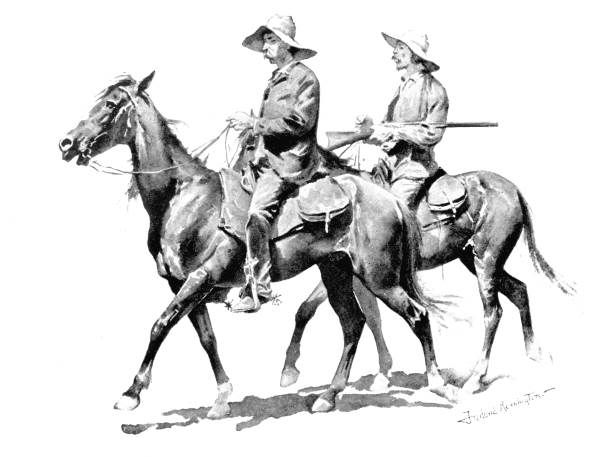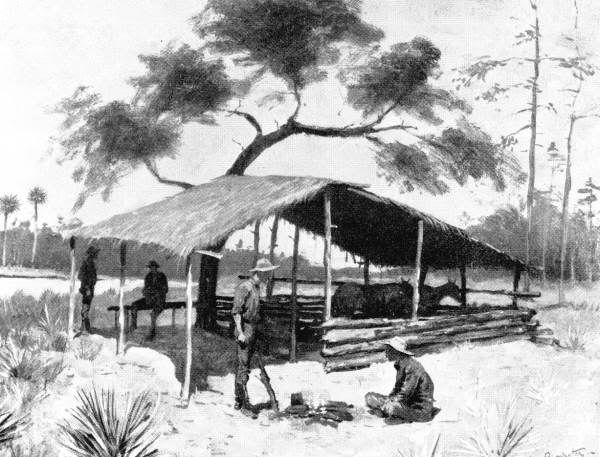- Joined
- Jan 29, 2010
- Messages
- 1,808
- Reaction score
- 6
Flash Pan Dan said:SuperCracker, Sir, May I impose on you to elaborate on who the “Florida cow hunters” were and their type and use of weaponry?
No problem.
In a nutshell, the Spanish settlers let their livestock (pigs and cows) roam free. After they left there was still a big population of cattle running around Florida. There was good money in making expeditions to find them, round them up and drive them to market. Fortunes were made doing so. Of course, that also made Florida kind of a rough place to be. From what I understand Arcadia and other central Florida towns made Dodge City look like a Disneyland.
From The history Channel.
Florida Crackers: America's Tropical Cowboys
Attacks on Spanish settlements and livestock reached a crescendo in deÂcades to come as rival English colonists from the Carolinas joined in the fray. By the late 1700s, Florida was only loosely controlled by Spain and offered refuge to the Seminole, who broke away from the Creek tribe to the north, and to restless Anglo-AmeriÂcans. Those white intruders were “noÂmadic like Arabs,” wrote the Spanish governor in the 1780s, and were “distinguished from savages only in their color, language, and superiority of their depraved cunning and untrustworthiness.” Their fellow Americans called them Crackers.
The Crackers who infiltrated Florida while it was still nominally Spanish had more than a little in common with the Seminole and early Spanish settlers. They loved riding and hunting, resented authorities who tried to restrict their movements, and counted their wealth largely in livestock. Many were of Celtic ancestry and had emigrated from Ireland, Wales, or Scotland, where free-range cattle herding was an ancient tradition.
Raising cattle was relatively easy in the Deep South because winters were mild and the animals did not have to be sheltered in barns and fed hay or grain. They could roam free until their owners rounded them up and drove them to market. Back-country Southerners also raised corn and other crops, and their fields were sometimes trampled by unpenned livestock, but courts seldom held herders liable for the damage. When Georgia, Alabama, and the Carolinas became too crowded for their free-roaming ways, Crackers headed west toward Texas or south into Florida and helped transform both those Spanish provinces into American possessions.
My family is descended from them. I was raised by my Grandfather in Ne Florida, who grew up in extreme SE Ga in an area that the family had inhabitited since they were politely asked to leave Ireland sometime in the late 18th century. Or so I have always been told. He worked cattle as did his father and presumably his. I was raised around them and was working cattle with him from the time I was very young. I have only just recently started looking into the Cracker Cowboys but the more I do the more I see similarities with my own life. Weird little pecularities that I can only assume have just been being done in the family since then.
In any case I've been shown spanish references to these cow hunters carrying short, half and three quarter stocked rifles on slings. One even says that the rifles were "finished in a manner not ordinary" (as close as I can remember) I take this to mean they were modifying rifles to use on horseback in the swamps here. Probably shortening and adding slings.
I have chased escaped cows on horseback through the woods and swamps here. A lot of time will be spent ducking under live oaks and weaving through tall palmetto scrub. a rifle with a 44" barrel would be an unimaginable PITA. Probably close to 30 would be good. My Grandfather had a 16" barreled 16ga SxS for doing just that.
As an interesting note, the wild boar we hunt today are, in large part, the descendants of the pigs and boar that Ponce DeLeon and the gang turned loose. There are also still good populations of wild horses and cattle to be found in some parts of central Fl. I know of at least two WMAs that have both.








